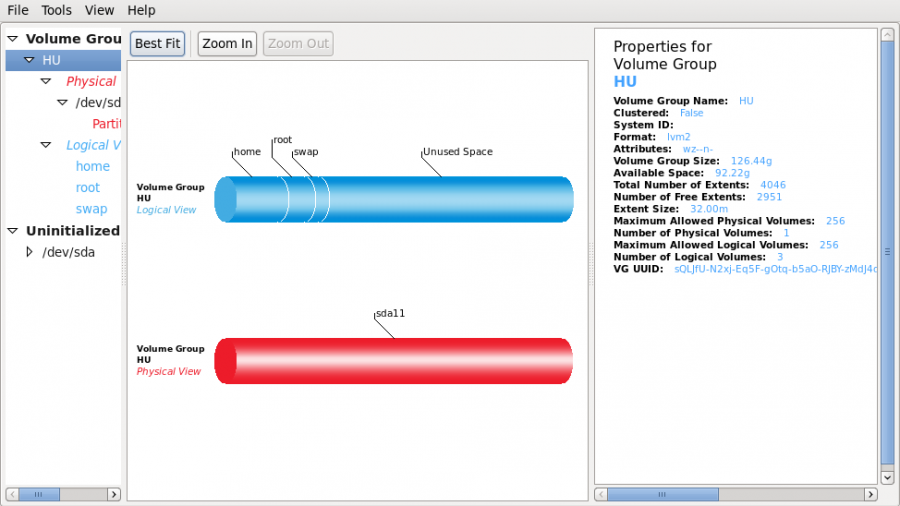

I selected the Virt type as kvm to take advantage of the virtualization capabilities of the Linux kernel. Next few screenshots quickly show the steps of creating and launching a new VM where I had to provide a name for the VM, select the installation CD image and specify the amount of RAM, number of cores and the size of the hard disk image for the virtual machine. After I restarted the system, I launched the Virtual Machine Manager and it looked like this.
#LOGICAL VOLUME MANAGER XUBUNTU INSTALL#
I didn’t install the qemu-kvm package as this package is not needed for a x86_64 hardware. I installed the following packages: sudo apt-get install qemu virt-manager virt-viewer libvirt-bin After that, I restarted the system and logged into my computer. For my system, the option could be found in BIOS Settings > Advanced BIOS Features > Virtualization.
#LOGICAL VOLUME MANAGER XUBUNTU 64 BIT#
I am running Xubuntu 14.04 as my main OS with Linux kernel 3.19.0-56 64 bit at the time of writing.įirst of all, I needed to enable the AMD-V from the BIOS menu to take full advantage of the processor. AMD-V is similar to Intel vt-x and it enhances the virtualization capability of a processor.

The system that I have comprises of an AMD F圆300 processor with 6 cores and AMD-V capability and 4 gigs of RAM.

This is to be kept in mind that qemu can run even without kvm but the speed will be much slower. On the other hand, kvm is the Linux kernel module that can help qemu execute the virtualized instructions directly on the CPU which can improve the performance greatly. Together virt-manager and qemu can be thought of as the Virtualbox. Virt-manager is some thing that provides a GUI to qemu. It can be compared to Virtualbox except that qemu itself does not have a UI, instead it’s a command line utility. Qemu is the software which can be used to install and run a guest OS on top of the actual OS to put it in a very simple way although it’s much more powerful than that. But this time I decided to use another widely recognized virtualization solution on Linux, qemu, along with kvm.įirst of all, let me give some brief idea about qemu, virt-manager and kvm. It has an easy and intuitive UI, supports all the features I needed and is open-source.


 0 kommentar(er)
0 kommentar(er)
